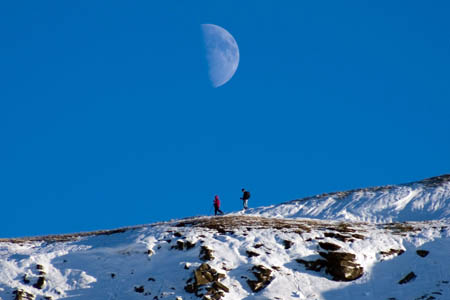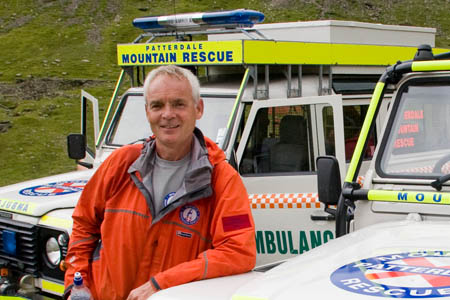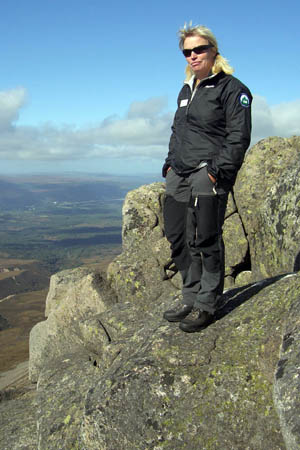
Don't get caught out after the clocks go back this weekend
Those balmy June days are becoming a distant memory and this weekend Britain’s summer comes to an official end.
While the turning back of the clocks on Sunday means a welcome extra hour in bed for most of us, it also signals the time when hillwalkers need to get into a different frame of mind as weather changes and nightfall comes earlier.
Although the forecast for the next few days is for mild weather, there will be strong winds on upland areas across Britain. Parts of Scotland have already had their first snows of the season. However, for the next few days freezing levels are likely to be above the summits of Britain’s mountains.
The shortening days mean walkers need to plan their routes more carefully if they are to complete their hill excursions before dark.

Richard Warren: "Night follows day"
Richard Warren, chairman of the Lake District Search and Mountain Rescue Association advises: “We are about to enter another potentially busy period for mountain rescue with half term and the clocks going back on Sunday morning.
“The one thing that we can say for definite is that night follows day and that it is extremely difficult to come down a mountain safely in the dark without a torch.
“The key to mountain safety is being properly prepared with the correct equipment and knowledge on how to use it. The essentials are: map, compass, torch plus weatherproof and windproof clothing, hat and gloves. Spare batteries are needed for your torch. Footwear needs to be strong, water resistant and have a decent tread.
“Wearing trainers and jeans is inviting trouble.”
Mr Warren, who chairs the umbrella organisation for the Lake District’s twelve rescue teams, also says walking poles can be helpful when coming down loose paths and scree.
Weather in Britain can be unpredictable. Mr Warren says: “We will see our first snow on the tops over the next few weeks and temperatures above 1,500ft [457m] will be significantly colder than the warmer valley bottoms.
“Remember to keep together as a group and pace yourselves for the slowest member of the group to make sure everyone enjoys the day out on the hill, not just the keen ones that race ahead. Watch the forecast and always be prepared to change your plans accordingly; the top will always be there for another day.
“Don’t rely on mountain rescue but know that the voluntary and unpaid service is there for you in a genuine emergency. Use your mobile phone with care as a last resort but recognise that you will not always be able to get a signal.
“Having said all this I am sure that the above advice is not needed for most of the grough readers who are already experienced walkers and climbers. However, if by reiterating this message we can save one life, prevent a broken ankle, avoid a hypothermic case or allow a group to get themselves off the mountain at 6p.m on Sunday night without having to call a rescue team out, then it is worth repeating the message.”
This weekend is also the final one of the normal Duke of Edinburgh’s Award season.

Heather Morning: "Don’t be afraid of turning back"
The safety message is vital in Scotland, where the higher mountains, more northerly latitude and remoteness of many of the areas mean self-sufficiency becomes more important and proper winter skills need to be learnt before venturing on to winter munros.
Heather Morning, mountain-safety adviser for the Mountaineering Council of Scotland, has the following tips to keep as safe as possible on Scotland’s hills:
- Make sure you have the additional recommended equipment for winter use, including the essentials of a pair of rigid boots, ice axe and crampons.
- Develop the technical skills you need to use this extra equipment safely. You can do this by going out with someone more experienced than yourself and developing skills on less serious terrain. There are also winter skills courses delivered by a professional instructors
- Look at the latest weather and avalanche reports to help you plan your day on the hill. Click on the links tab at the top of this page for the addresses of mountain weather forecast sites. The sportscotland Avalanche Information Service starts in December.
- Don’t be too over ambitious – short days can easily be extended. It is not always easy to cut short a longer route.
- Adopt a progressive approach to your days out. For example, it would be wise to be comfortable and proficient with your navigation skills in summer conditions before venturing out into the winter hills.
- Leave information with someone about your intended plan, particularly if you are heading out alone.
- And finally: don’t be afraid of turning back, or even changing your plans completely to a lower level route.
The newly launched grough route system enables routes to be planned, saved and shared. You can also get accurate details of how much ascent and descent is involved in a route, and likely timings. Route cards of the planned walk can be printed to be carried with you and left with someone so your route is known.
There is even a campaign in Scotland to have its own time zone – ‘tundra time’. The suggestion came from historian Sir Alistair Horne on the BBC Today programme. He said the UK should adopt standard European time, meaning an extension of daylight in the evenings, while clocks could still go back north of the border, to allow better use of Scotland’s short daylight.
This is because, the further north you are, the shorter the daylight hours once the autumn equinox is passed.
grough also has its own feature on how to stay safer in the winter months.